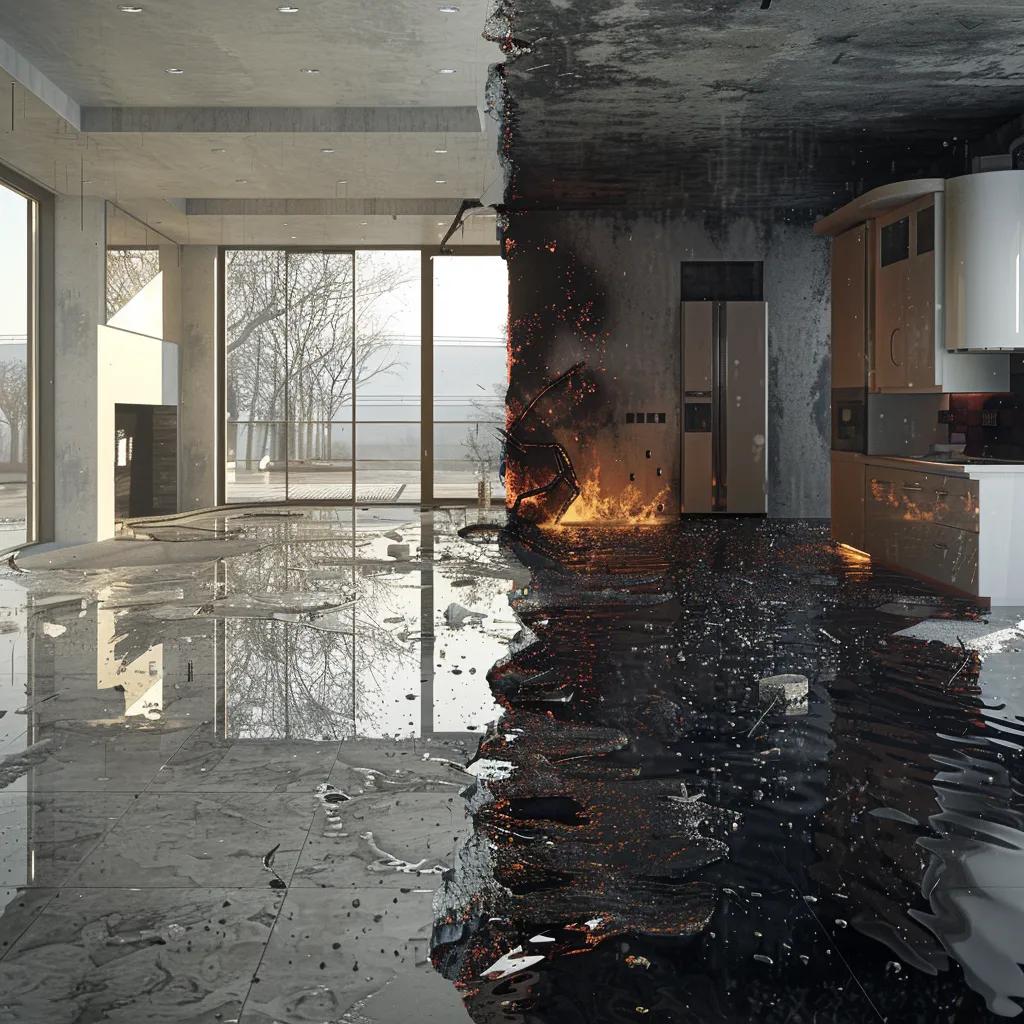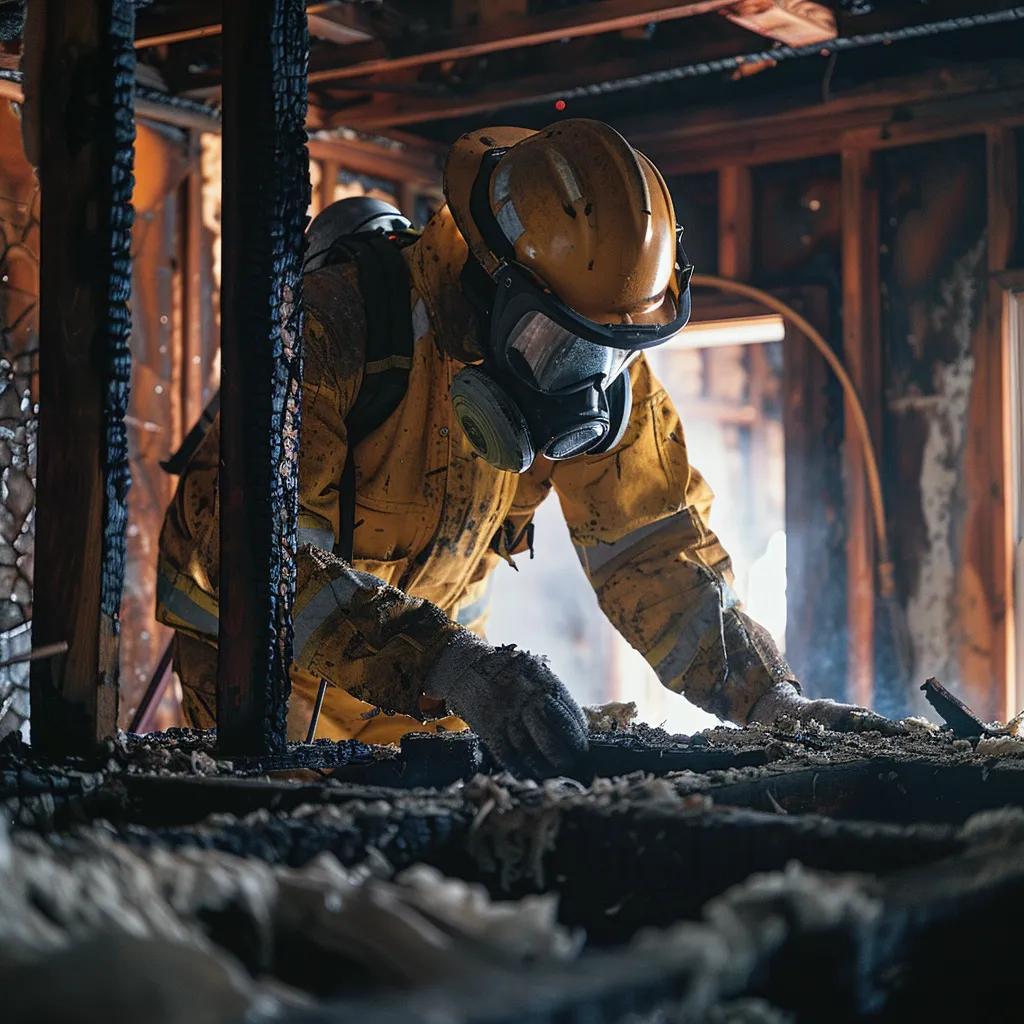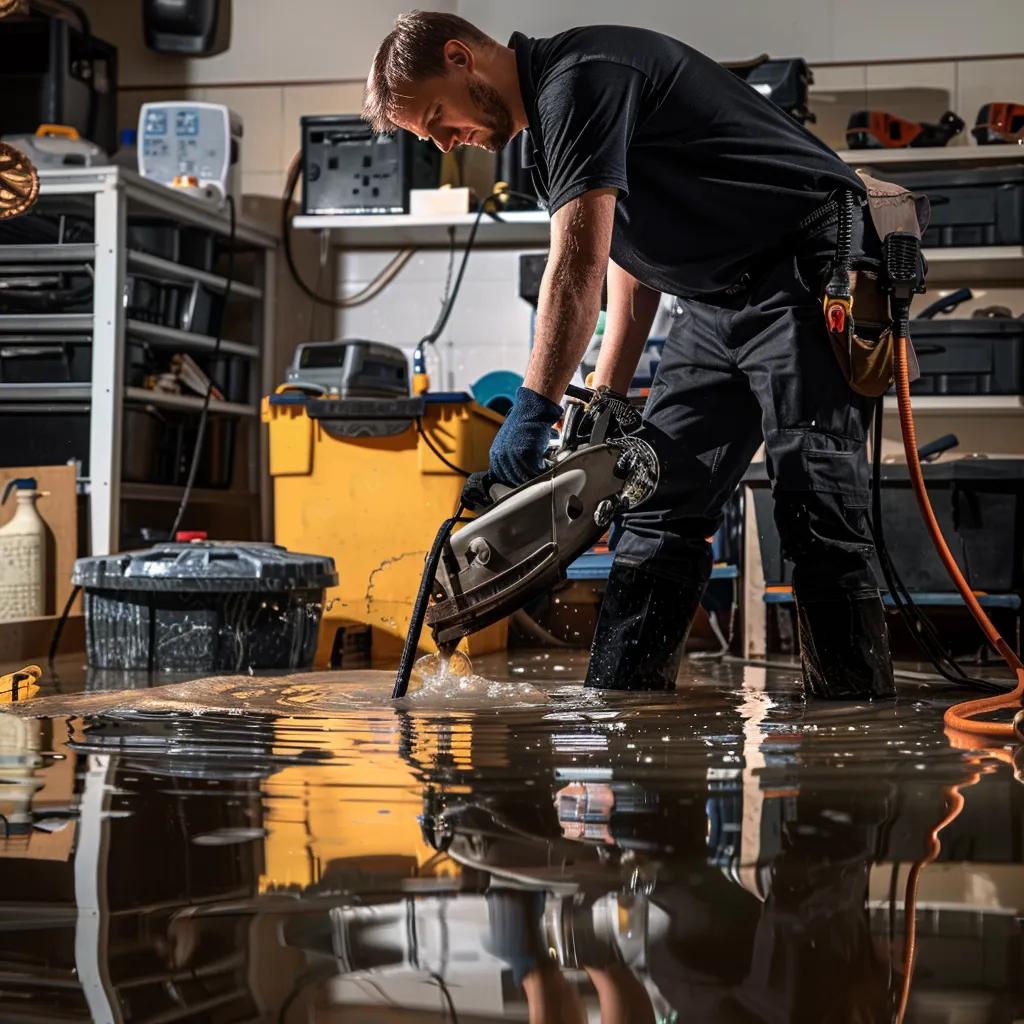
Understanding Fire vs. Water Damage Restoration: Comprehensive Guide for Water Damage Restoration in New York

Restoration of a property after fire or water damage demands specialized techniques because each type of loss introduces unique contaminants, structural threats, health risks and insurance challenges. Homeowners and building managers searching for water damage restoration in New York face urgent decisions when floods, leaks or burst pipes threaten drywall, floors and personal belongings. This guide maps out how fire damage and water damage differ, explains step-by-step restoration protocols, clarifies insurance claim nuances, highlights prevention tactics and shows why Restoration Experts delivers rapid 24/7 response, certified technicians and insurance support across NYC, Long Island, Suffolk and Nassau. You will learn:
- Key distinctions between smoke and soot versus flooding and mold
- Detailed fire damage cleanup stages and professional mitigation roles
- Water extraction, drying and mold‐prevention strategies
- Insurance coverage contrasts for fire, water and flood claims
- Proven prevention measures for fire outbreaks and water leaks
- Why Restoration Experts is your trusted partner in New York
- Immediate actions to protect life and property post-damage
Whether you need an emergency call, a quote request or guidance on filing a claim, this article equips you with actionable insights and links to our specialized services at Restoration Experts.
What Are the Key Differences Between Fire Damage and Water Damage?
Fire damage and water damage represent two fundamentally different challenges because one involves combustion by-products and the other involves moisture intrusion that can foster microbial growth. Understanding these distinctions sets the stage for choosing appropriate restoration pathways and avoiding secondary harm.
Fire Damage vs. Water Damage: Key Differences
Fire damage often involves high temperatures that can warp structural supports and leave behind acidic residue from smoke and soot. Water damage, on the other hand, results from moisture intrusion, which can lead to mold growth and material deterioration within a short period.
National Fire Protection Association, Fire Loss in the United States (2024)
This research provides a general overview of the differences between fire and water damage, which is essential for understanding the article’s core concepts.
- Fire damage entities include smoke, soot, heat and structural weakening
- Water damage entities include flooding, leaks, moisture retention and contamination
- Restoration methods diverge between odor removal and water extraction
- Health risks range from smoke inhalation to mold exposure
These differences unfold in four core areas: causes and effects of fire damage, mechanisms and consequences of water damage, structural impacts from each, and associated health hazards.
What Causes Fire Damage and What Are Its Main Effects?
Fire damage occurs when uncontrolled combustion releases heat and combustion by-products that burn, melt or char building materials. High temperatures warp structural supports, while smoke and soot coat surfaces, embed odors and corrode metals. For example, a kitchen grease fire can ignite cabinetry, deposit acidic soot on drywall and compromise load-bearing beams.
Key fire damage attributes:
- Smoke → coats walls and ceilings, leaving acidic residue
- Soot → penetrates fabrics and HVAC systems, causing discoloration
- Heat → warps metal and weakens wood framing
- Structural damage → charred beams require inspection and reinforcement
These effects create an environment where specialized deodorization, soot removal and structural assessment become critical before rebuilding can proceed.
How Does Water Damage Occur and What Are Its Immediate Consequences?
Water damage arises from external floods, internal leaks or burst plumbing that saturate building materials within minutes. Moisture wicks into drywall, wood and insulation, triggering mold growth and microbial contamination within 24–48 hours. A burst pipe in a basement can flood multiple rooms, soaking floor joists and promoting hidden mold colonies behind paneling.
Key water damage attributes:
- Flooding → rapid submersion of floors and lower walls
- Leaks → slow, persistent moisture intrusion behind surfaces
- Mold → begins colonizing porous materials in under two days
- Contamination → category 2 or 3 water may carry pathogens
Prompt water extraction and drying are essential to prevent secondary structural deterioration and health risks.
How Do Fire and Water Damage Differ in Structural Impact?
Before choosing restoration tactics, property owners must compare how fire and water weaken building integrity. The table below outlines core structural differences using an entity-attribute-value model.
| Entity | Attribute | Value |
|---|---|---|
| Fire Damage | Material Effect | Charring of wood, melting of plastics, warping of steel frames |
| Fire Damage | Load-Bearing Impact | Compromised joists and beams requiring structural reinforcement |
| Water Damage | Material Effect | Swelling of drywall, rot in wood framing, delamination of floorboards |
| Water Damage | Load-Bearing Impact | Reduced strength in wood supports, rust in metal connections |
Fire damage often mandates selective demolition of burnt elements, whereas water damage requires moisture testing and controlled drying to preserve as much structure as possible.
What Are the Common Health Risks Associated with Fire and Water Damage?
Smoke inhalation and mold exposure present two distinct health threats that restoration efforts must address immediately.
- Smoke inhalation → airborne particulates and carbon monoxide can damage lungs and heart
- Soot exposure → microscopic residues aggravate allergies and respiratory conditions
- Mold exposure → prolonged contact triggers asthma, sinus infections and skin irritation
- Contaminated water → category 3 floodwaters carry bacteria and viruses
Mitigating these risks involves air filtration, HEPA vacuuming for soot, mold remediation protocols and disinfectant application on water-damaged areas before occupant reentry.
What Is the Fire Damage Restoration Process?

A structured fire damage restoration process ensures safety, thorough cleanup and efficient rebuild. Certified technicians follow industry standards to restore your property from initial damage assessment through final repairs.
What Are the Essential Steps in Fire Damage Cleanup and Repair?
The comprehensive fire damage restoration process unfolds in five key steps:
- Assessment and Safety – A certified technician evaluates structural integrity, identifies hazards and secures the site.
- Soot and Smoke Removal – Specialized HEPA vacuums and dry-chemical sponges eliminate surface residue.
- Odor Elimination – Thermal fogging and ozone treatments neutralize embedded smoke odors.
- Structural Repairs – Replacement of charred framing and drywall; reinforcement of compromised supports.
- Reconstruction and Finishing – Painting, flooring replacement and fixture installation return the property to pre-loss condition.
Each step targets specific fire-related contaminants and structural concerns to protect health and ensure long-term durability.
How Do Certified Technicians Handle Fire Damage Mitigation?
Certified technicians trained in IICRC S-500 procedures take immediate action to stabilize conditions, prevent collapse and begin containment. They deploy negative-air machines to isolate affected zones, use moisture meters to confirm dryness after cleaning and follow strict safety protocols to protect occupants and workers.
How Long Does Fire Damage Restoration Typically Take?
Project duration for fire damage restoration generally ranges from 7 to 30 days depending on severity, size of the property and extent of structural rebuild. Minor surface fires can be addressed in under two weeks, while large commercial losses may require multiple months of reconstruction.
Key time factors:
- Burn depth and extent
- Accessibility of structural elements
- Permitting and insurance approvals
- Seasonal demand for contractors
What Is the Water Damage Restoration Process?
A timely water damage restoration process minimizes mold risk, material loss and downtime. Technicians blend extraction technology with moisture-control strategies to dry structures safely.
What Are the Critical Steps in Water Extraction and Drying?

Water damage restoration follows a proven four-step protocol:
- Water Extraction – Industrial pumps and vacuums remove standing water from floors and carpets.
- Structural Drying – High-capacity air movers create airflow; dehumidifiers draw moisture from walls and air.
- Moisture Monitoring – Hygrometers and infrared cameras track drying progress and pinpoint hidden damp spots.
- Final Cleanup – Sanitizing affected areas, replacing saturated materials and preparing surfaces for rebuild.
Rapid execution of these steps prevents mold growth and structural decay.
How Is Mold Growth Prevented During Water Damage Restoration?
Preventing mold involves maintaining a moisture content below 15% in structural materials and treating all surfaces with EPA-registered antimicrobials. Technicians remove porous items like carpet padding when necessary and deploy desiccant dehumidifiers in high-humidity environments to halt microbial proliferation.
Water Damage Restoration: Mold Prevention
Preventing mold growth during water damage restoration involves maintaining a low moisture content in structural materials and treating surfaces with EPA-registered antimicrobials. Technicians often remove porous items and use dehumidifiers to control humidity.
U.S. Environmental Protection Agency, Mold Remediation in Schools and Commercial Buildings (2008)
This source supports the article’s discussion of mold prevention strategies during water damage restoration.
What Are the Health and Safety Precautions in Water Damage Cleanup?
Safety precautions during water damage restoration include:
- Wearing PPE (gloves, N95 respirators, eye protection) to guard against pathogens
- Disinfecting category 2 and 3 water zones to eliminate bacteria and viruses
- Ensuring electrical systems are de-energized before pumping
- Implementing containment barriers to avoid cross-contamination
Strict adherence to OSHA guidelines protects both workers and occupants.
How Do Insurance Claims Differ for Fire and Water Damage Restoration?
Navigating insurance claims effectively requires understanding coverage nuances for fire, standard water damage and flood losses. Proper documentation and timely reporting can accelerate payout and minimize out-of-pocket expenses.
What Should Homeowners Know About Fire Damage Insurance Coverage?
Most homeowners policies cover sudden and accidental fire damage, including smoke and soot cleanup, structural repairs and temporary living expenses. Policyholders should:
- Document damage with photos and videos
- Keep itemized lists of personal property loss
- Obtain a written estimate from a licensed restoration service
- Notify the insurer immediately to schedule an adjuster inspection
Thorough documentation supports accurate claim settlement.
How Is Water Damage Insurance Coverage Different, Especially Regarding Floods?
Standard policies typically cover water damage from burst pipes or appliance failures but exclude flooding caused by rising water. Flood insurance through the National Flood Insurance Program (NFIP) is required to cover external inundation. Key distinctions:
- Burst pipe claim → covered under dwelling protection
- Flood claim → requires NFIP policy
- Mold remediation → may be limited or excluded without additional endorsements
Understanding policy terms and exclusions ensures you secure the right coverage.
What Are Best Practices for Navigating Insurance Claims After Property Damage?
Efficient claim handling involves:
- Immediate Mitigation – Begin emergency restoration to limit secondary damage.
- Detailed Records – Save receipts, invoices and correspondence.
- Adjuster Collaboration – Provide clear access and guide the adjuster through affected areas.
- Professional Estimates – Submit contractor estimates directly to the insurer for approval.
Proactive coordination with your restoration provider and insurer streamlines repairs and reduces delays.
How Can Property Owners Prevent Fire and Water Damage?
Proactive prevention strategies protect investments and reduce the likelihood of costly emergencies. Regular maintenance, inspections and safety upgrades mitigate risks before they become disasters.
What Are Effective Fire Prevention Strategies for Homes and Buildings?
Comprehensive fire prevention includes:
- Installing and testing smoke alarms on every level monthly
- Having fire extinguishers accessible in kitchens and mechanical rooms
- Scheduling annual inspections of electrical wiring and heating systems
- Maintaining defensible space around buildings by clearing dry vegetation
These measures reduce ignition sources and improve early warning.
How Can Water Damage Be Prevented, Especially in New York Properties?
Key water-damage prevention tactics:
- Installing leak detection devices and automatic shut-off valves on water mains
- Waterproofing basements with interior sealants and exterior drainage systems
- Insulating pipes in unheated crawlspaces and attics against winter freezing
- Scheduling seasonal gutter cleaning and roof inspections
Early detection and proper drainage guard against leaks and floods.
What Role Does Regular Maintenance Play in Reducing Damage Risks?
Routine maintenance fosters early issue identification and timely repairs. Conducting quarterly inspections of plumbing, HVAC and roofing systems uncovers minor concerns before they escalate into emergencies, saving time and money on full-scale restorations.
Why Choose Restoration Experts for Fire and Water Damage Restoration in New York?
When every minute counts, choosing a local partner with proven expertise ensures faster recovery and smoother insurance outcomes. Restoration Experts combines rapid response, certified crews and comprehensive support to guide you from crisis to completion.
How Does Restoration Experts Provide Rapid 24/7 Emergency Response?
Our emergency hotline connects you instantly with a dispatch team at any hour. Technicians arrive on scene within an hour, deploy containment measures and begin mitigation to prevent further damage.
What Certifications and Expertise Do Our Technicians Have?
We employ IICRC-certified specialists in fire, smoke, soot and water remediation. Ongoing training in advanced drying, odor control and structural repair ensures each technician applies industry-leading best practices.
How Does Restoration Experts Assist with Complex Insurance Claims?
Our in-house claims coordinators prepare detailed documentation, communicate directly with adjusters and advocate for comprehensive settlements. By aligning restoration estimates with policy language, we help secure full coverage for repair and replacement.
Which New York Areas Do We Serve?
Restoration Experts delivers service across:
- New York City boroughs (Manhattan, Brooklyn, Queens, the Bronx, Staten Island)
- Long Island’s Nassau and Suffolk counties
- Westchester, Rockland and Putnam counties
Local presence means faster arrival, familiar code compliance and stronger community trust.
What Are the Immediate Steps to Take After Fire or Water Damage?
Reactive measures in the first hours can limit loss, protect occupants and set restoration on a successful path. Knowing what to do immediately avoids common mistakes that increase repair costs.
What Should You Do Immediately After Fire Damage Occurs?
- Ensure all occupants are safe and call 911 if needed.
- Shut off utilities—gas, electricity and water—if safe to do so.
- Do not attempt to clean soot or handle damaged structures yourself.
- Contact a professional restoration service for emergency board-up and content protection.
Prompt intervention preserves structural integrity and reduces smoke migration.
What Are the First Actions to Take Following Water Damage?
- Turn off the main water supply to stop flooding.
- Move undamaged belongings to a dry area.
- Call a 24/7 water damage team to begin extraction and drying.
- Document damage with photos before mitigation begins.
Rapid extraction prevents mold colonies and secondary deterioration.
When Should You Call for Professional Restoration Services?
Any sign of structural damage, persistent odors, visible mold or contaminated water warrants immediate professional attention. Our 24/7 hotline ensures a technician is dispatched without delay to limit loss and guide your insurance claim. Reaching out quickly to Restoration Experts not only safeguards your property but also reconfirms your peace of mind during a stressful event. Building trust through certified expertise and local responsiveness, Restoration Experts stands ready to restore safety, functionality and comfort to your home or commercial property in New York.
